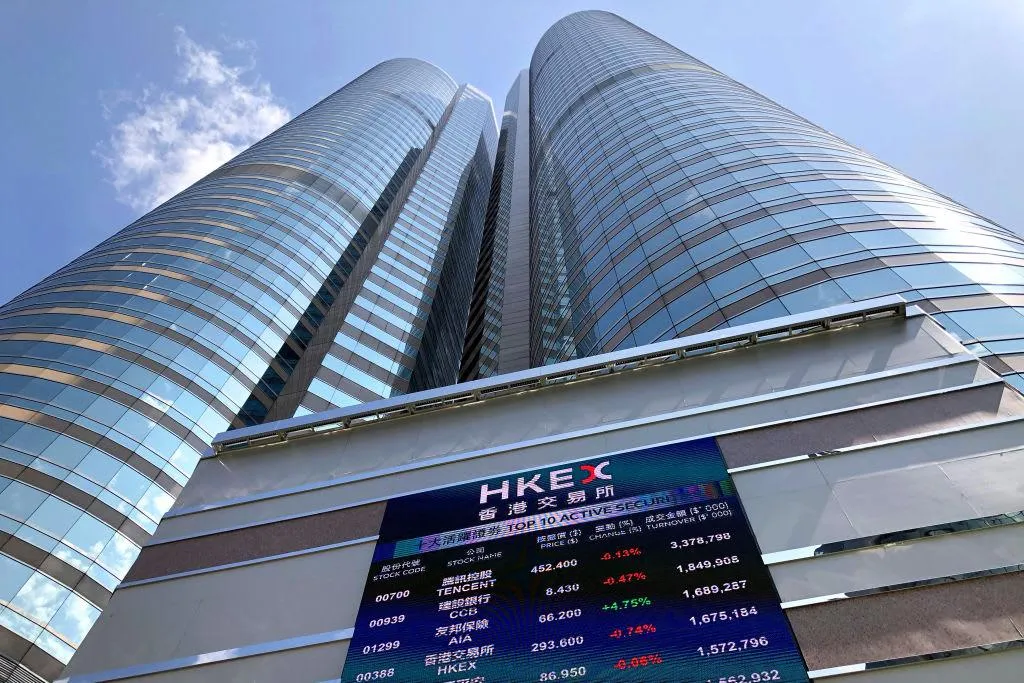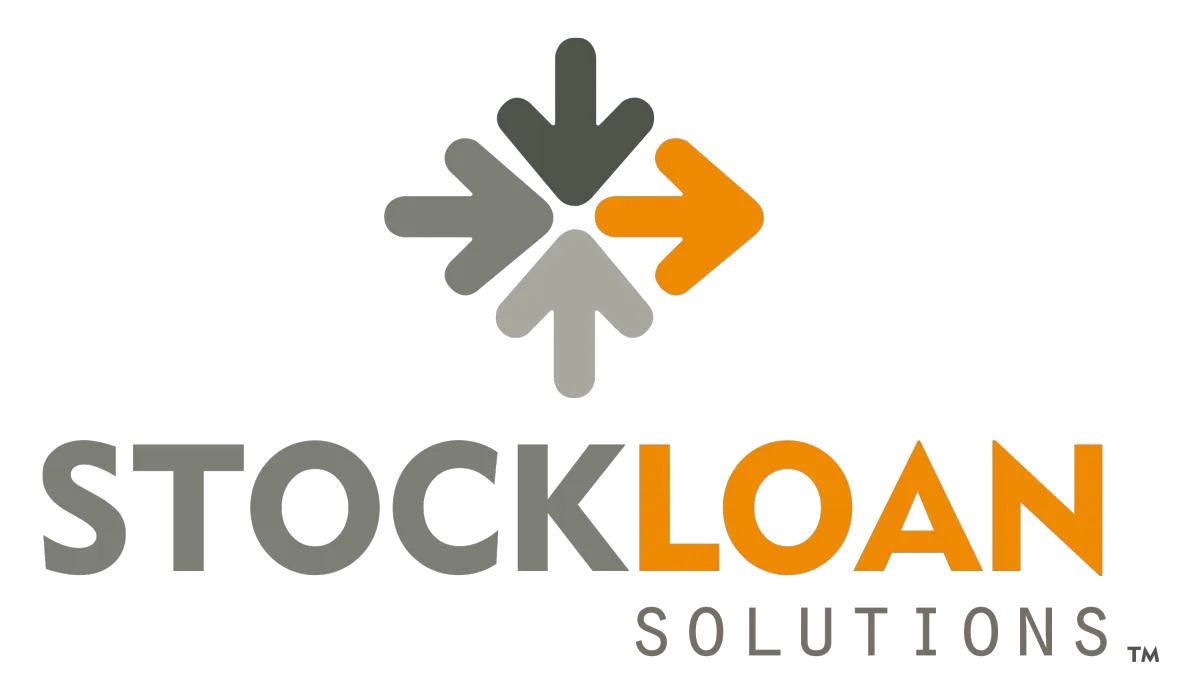Hong Kong Stock Exchange
Our experts at Stock Loan Solutions have years of experience in the stock loan industry. We will help you make the most of your HKEX shares and understand what the ideal loan amount is for you.
Loans Against HKEX Securities
By using our HKEX stock loans, you can use your loan proceeds to pay down debt, cover expenses, or invest in new business opportunities. You don’t have to give up any of your shares permanently; they are used to secure the funds you borrow. Learn more about our HKEX stock loan process and how it can benefit you below.
Schedule your 15-minute phone call with us today!

About Hong Kong Stock Exchange (HKEX)
The (Hong Kong Stock Exchange) HKEX is one of the world’s largest stock exchanges in terms of market capitalization. Its origins date as early back as 1891.
The HKEX became what we know it as today in 1941 when it merged with a smaller securities market.
The HKEX has developed a lot since its inception. It began to allow automated ordering in 1993 and stock option trading in 1995.
General Purpose Loan vs. Margin Loan
Our rates are very competitive compared to traditional margin loans!
| $25K | $50K | $100K | $500K | |
| Stock Loan Solutions | 10.000% | 9.000% | 8.000% | 7.000% |
| E-Trade | 13.700% | 13.200% | 12.700% | 12.200% |
| Fidelity | 13.075% | 12.125% | 12.075% | 11.825% |
| Charles Schwab | 13.075% | 12.125% | 12.075% | 11.825% |
HKEX History
With the growing popularity of electronic trading, the HKEX closed its physical trading floor in late 2017. Before its shutdown, the physical trading floor only produced less than 1% of trade volume. Now, the exchange operates exclusively online.
The largest companies listed on the HKEX are mostly banks and insurance companies located in Mainland China. Some of these companies include Bank of China, China Construction Bank, and Ping An Insurance.
About Hong Kong
Hong Kong is its own region located in the People’s Republic of China. It’s a metropolitan area as well as a special administrative region. It operates on a “one country, two systems” basis because of its separate governmental and economic systems.
Surrounded by the South China Sea, Hong Kong once contained several farming and fishing villages. Today, it serves as a very important commercial port and financial center. Hong Kong is among the top 10 regions in the world when it comes to both imports and exports. The area is home to many significant skyscrapers including the Bank of China Tower, Two International Finance Center, and International Commerce Center.
Hong Kong is highly developed, and its residents find it a great place to live and work. It has a reliable and heavily-used public transit system and some of the worlds’ highest life expectancies.
With over 7.5 million residents living on 426 square miles of land, it’s one of the most densely populated areas in the world.
Interested in a Hong Kong stock loan?
Call us at +1 866-446-1009
Or email us at [email protected]
Check whether you qualify
Deals can be closed within 48 hours
Hong Kong Stock Loans Explained
Here are some common questions that we get about the HKEX stock loan process.
Am I Held Personally Liable for an HKEX Stock Loan?
If you default on your loan, you will not be held personally liable and your credit score will not suffer. We will simply take over ownership of your shares.
Do I Need Good Credit to Get an HKEX Stock Loan?
No. We do not perform credit checks because your loan is secured by your HKEX shares.
How Much Cash Can I Access through HKEX Securities Lending?
The exact amount of cash you will receive will depend on factors like:
How many shares of HKEX-listed securities you have
Share price
Trading volume
Our clients can expect to receive between a 45 and 60% LTV (loan-to-value) ratio, which is very competitive when compared with other lenders.
How Long Does It Take to Get My Funds?
Our underwriting team is completely in-house. This way, we can streamline the stock loan process.
In most cases, you will receive your funds within four to six days.
How Do You Guarantee My Confidentiality?
As your lender, we take your privacy very seriously. For every transaction you complete with us, we secure your information in our encrypted system. We understand the sensitive nature of receiving a stock loan so we always ensure to prioritize your privacy.
Why Should I Apply for a Stock Loan?
Stock loans may seem risky or not practical for the uninformed investor. However, securities lending offers several notable advantages including:
Quick Access to Cash
Not all assets are the same when it comes to liquidity. If you have any kind of equipment, land, real estate, or machinery on hand, you will have a difficult time converting it to cash.
Contrary to what you may initially believe, stock loans make getting quick access to cash easy. Once you get approved for a stock loan, you will have your funds to use however you see fit.
Flexible Conditions
Stock loans offer various terms that can help you no matter your circumstances. At Stock Loan Solutions, you can choose from 24 to 60-month repayment plans.
Our team works to secure you the best interest rate possible, and you should request your loan as soon as possible to lock in the best rate.
Discuss Your HKEX Stock Loan Today!
Are you ready to discuss your HKEX stock loan? Schedule a 15-minute phone discussion with us today! We’ll go over all the details and answer any questions you have so you can borrow with confidence.
The information contained herein is presented solely for the purposes of discussion and under no circumstances should this be considered an offer to buy or a solicitation of an offer to sell any security. Stock Loan Solutions is not a registered securities broker-dealer or an investment adviser with the U.S. Securities and Exchange Commission (the “SEC”) or with any state securities regulatory authority. Stock Loan Solutions, its managers or affiliates have not been registered and do not plan to be registered under the Investment Advisers Act of 1940 or any similar state or foreign securities laws. Stock Loan Solutions is not registered under the Investment Company Act of 1940 or under any similar state or international securities laws. Stock Loan Solutions does not offer any form of investment (buy or sell) advice, tax counseling, estate planning, or any other securities or financial advice whatsoever. No statements on this website or any verbal or written statement by any representative shall be construed as such advice. We are neither licensed nor qualified to provide investment advice.
We take protecting your data and privacy very seriously. Do not sell my personal information.
© 2024 Stock Loan Solutions
